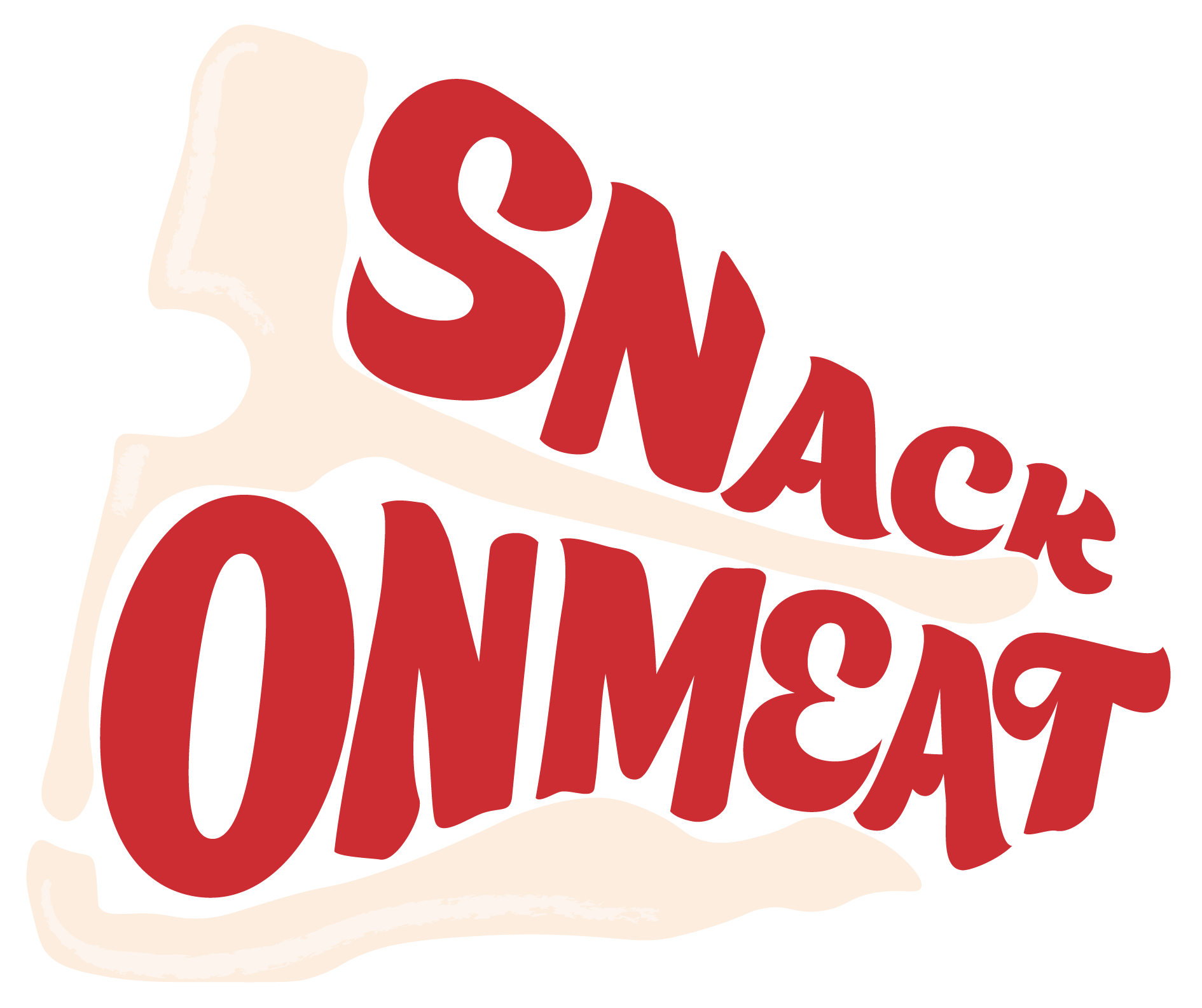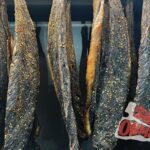With many snack options available, few treats rival the satisfying chew of a piece of jerky. And while this snack is delicious, it also comes with a notorious price tag. So here’s the burning question: Is it cheaper to make your own jerky, or should you stick to the convenience of grabbing a bag at the store?
Making jerky at home is definitely cheaper than buying it. By taking the DIY approach, you gain the ability to use budget cuts and ingredients while also avoiding the costs of packaging and marketing. Not only do you gain financial savings but also the freedom to tailor flavours, control ingredients, and experience the satisfaction of crafting your own delicious product.
So, if you’re a fan of jerky and looking to save some money in your snack budget, roll up your sleeves and embark on the journey of homemade jerky – your wallet and taste buds will thank you. Let’s delve into the economics of jerky-making, exploring factors like cost, effort, and overall worth.

Is Making Jerky Cheaper Than Buying?
Making jerky at home is undeniably cheaper than buying it from a store. When you embark on the DIY jerky-making journey, you unlock a range of cost-saving benefits that contribute to your overall financial well-being. Here’s a breakdown of why the homemade route is the more economical choice:
- Raw Material Costs:
- Bulk Savings: Purchasing meat in bulk, especially when it’s on sale, significantly reduces the per-kilogram cost. This allows you to capitalize on discounts and promotions, bringing down the overall expense of your jerky.
- Economical Cuts: Choosing budget-friendly cuts of meat, such as the eye of round or flank steak, allows you to maximize your savings without compromising on flavour or texture.
- Ingredient Control:
- DIY Marinade: Creating your own marinade from basic, readily available ingredients eliminates the need to buy pre-packaged seasoning mixes. This not only saves money but also gives you control over the flavours, allowing for customisation to suit your taste preferences.
- Avoiding Premium Additives: Store-bought jerky often includes additives, preservatives, and high levels of sodium, contributing to its elevated price. By making your own, you cut out these premium additives, resulting in a more cost-effective and healthier snack.
- Energy Costs:
- Minimal Dehydration Expenses: The energy costs associated with dehydrating jerky at home are relatively low. Whether using an oven or a food dehydrator, the electricity consumption is minimal, adding only a negligible amount to the overall cost per pound
The Cost Breakdown
To answer the burning question of whether making your own jerky is cheaper than buying it, let’s break down the costs involved. When you purchase commercial jerky, you’re not just paying for the meat. You’re also covering packaging, marketing, and the convenience of having a ready-to-eat snack at your fingertips.
When you decide to make your own jerky, the primary expenses include the cost of raw meat, marinade ingredients, and the energy used in the dehydration process. Let’s compare these costs to the average price of store-bought jerky per pound.
- Raw Meat Cost: Purchasing meat in bulk and on sale can significantly reduce the per-pound cost. Choosing economical cuts, such as the eye of round or flank steak, further contributes to savings. On average, an eye of round beef roast will cost $20 per kg (AUD).
- Marinade Ingredients: Creating your marinade allows you to use pantry staples and avoid the premium prices often associated with pre-packaged jerky seasonings. You have the power to control the quality of each ingredient, ensuring a cost-effective yet flavorful result. A rough estimate for these ingredients might be $2 to $3 per kg of meat.
- Dehydration Process: The energy cost of dehydrating jerky in an oven or food dehydrator is relatively low. It might add a few cents to the overall cost per pound.
In contrast, commercial jerky prices can range from $80 to $90 per kg, depending on the brand and quality. Considering the cost breakdown, making your own jerky is undoubtedly more economical.

Is It Worth It to Make Jerky?
Beyond the financial considerations, making your own jerky offers a range of intangible benefits that contribute to its overall worth (The Joy of Making Homemade Jerky).
- Freedom to Tailor Flavors:
- Customization: One of the significant advantages of making your own jerky is the freedom to tailor the flavours to your liking. Whether you prefer a sweet and tangy profile, a spicy kick, or a smoky undertone, you can experiment with various spices and seasonings until you discover the perfect blend.
- Dietary Preferences: For those with specific dietary restrictions or preferences, crafting your own jerky allows you to control the amount of salt, sugar, or other additives, ensuring a healthier snack tailored to your needs.
- Ingredient Control:
- Quality Meat: When you make jerky at home, you have the flexibility to choose the quality of the meat you use. Opting for lean cuts not only contributes to a healthier snack but also ensures that you’re getting value for your money.
- Avoiding Additives: Commercial jerky often contains preservatives, artificial flavours, and high levels of sodium. By making your own, you eliminate these additives, creating a cleaner and more wholesome product.
- Satisfaction of Crafting Your Own:
- Culinary Adventure: Making jerky at home is not just a cost-saving measure; it’s a culinary adventure. The process of marinating, drying, and enjoying the fruits of your labour adds a layer of satisfaction that goes beyond the monetary aspect.
- Pride in Creation: There’s a unique sense of pride that comes with creating something delicious from scratch. Sharing your homemade jerky with friends and family becomes a gratifying experience, and the positive feedback is the icing on the cake.

How Much Jerky Does 1 Kg of Beef Make?
The yield of jerky from a given amount of meat depends on factors such as the cut, thickness of slices, and dehydration process. On average, you can expect a 50-75% reduction in weight due to moisture loss during dehydration.
- Cut and Thickness: Opting for lean cuts of meat, such as sirloin or round, is ideal for jerky. Slicing the meat thinly, less than 1cm thickness, ensures faster and more even dehydration. A kilogram of beef will yield approximately 400 to 600 grams of jerky.
- Dehydration: The drying process, whether in an oven or a dehydrator, typically takes 4-12 hours. Remember that the thickness of your slices and the drying method will influence the final yield. Also depending on how dry you like it, if there is higher moisture content, the weight will be more.
Considering the moisture reduction, making jerky at home allows you to stretch your meat further, providing a substantial amount of jerky from a relatively small amount of beef.
What Is the Cheapest Cut of Meat to Make Jerky?
When it comes to making jerky on a budget, the eye of round is often considered the cheapest cut of meat. This lean and economical choice provides a balance between cost and flavour, making it a popular option among jerky enthusiasts.
Choosing the right cut of meat is crucial for both flavour and cost considerations. While certain cuts may be more expensive, they often offer a better balance of taste and texture for jerky. Here are some popular choices:
- Top Round: This lean and flavorful cut is commonly used for jerky. While it may be slightly pricier than other options, its tenderness and taste make it a preferred choice.
- Flank Steak: Known for its bold flavour, flank steak is a cost-effective option for jerky. It’s important to cut against the grain to ensure a tender bite.
- Eye of Round: A lean and budget-friendly choice, the eye of round is a go-to cut for many jerky enthusiasts. It requires careful slicing and marinating to enhance tenderness.
For all the budget-friendly cuts to make jerky, here is a helpful guide starting with the least expensive to most.
Conclusion
In the discussion of whether it’s cheaper to make your own jerky, the scales tip decisively in favour of the DIY approach. The financial savings, coupled with the joy of customisation and the satisfaction of creating your own delicious snacks, make homemade jerky a rewarding endeavour.
As you embark on your jerky-making journey, consider the balance between cost, flavour, and effort. Whether you choose top round, flank steak, or eye of round, the world of homemade jerky is as diverse as the cuts of meat you can use. So, fire up that dehydrator or preheat the oven, and enjoy the flavorful rewards of your homemade jerky – a snack that’s not only delicious but also easy on your wallet.
Latest Posts:
- The Truth About Beef Jerky And Your Health
 A favourite among outdoor enthusiasts for its transportability, for fitness enthusiasts for its …
A favourite among outdoor enthusiasts for its transportability, for fitness enthusiasts for its … - Kangaroo Biltong: How To Make It
 We all know beef, game, and ostrich are the most traditional meats used …
We all know beef, game, and ostrich are the most traditional meats used … - What Is Biltong? Everything You Need To Know
 In the world of savoury snacks, one delicacy stands out for its unique …
In the world of savoury snacks, one delicacy stands out for its unique …





